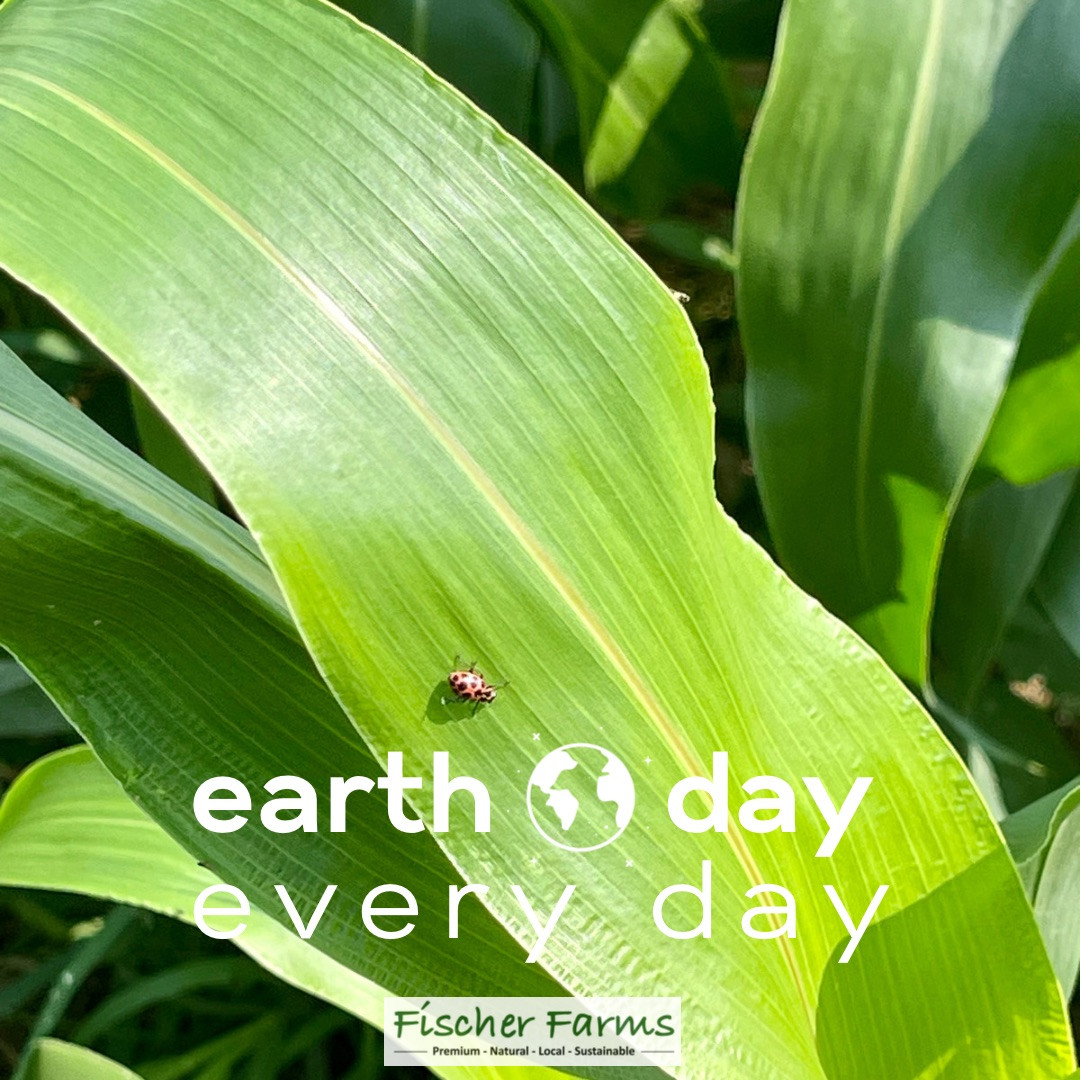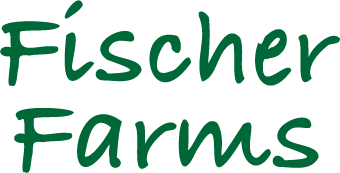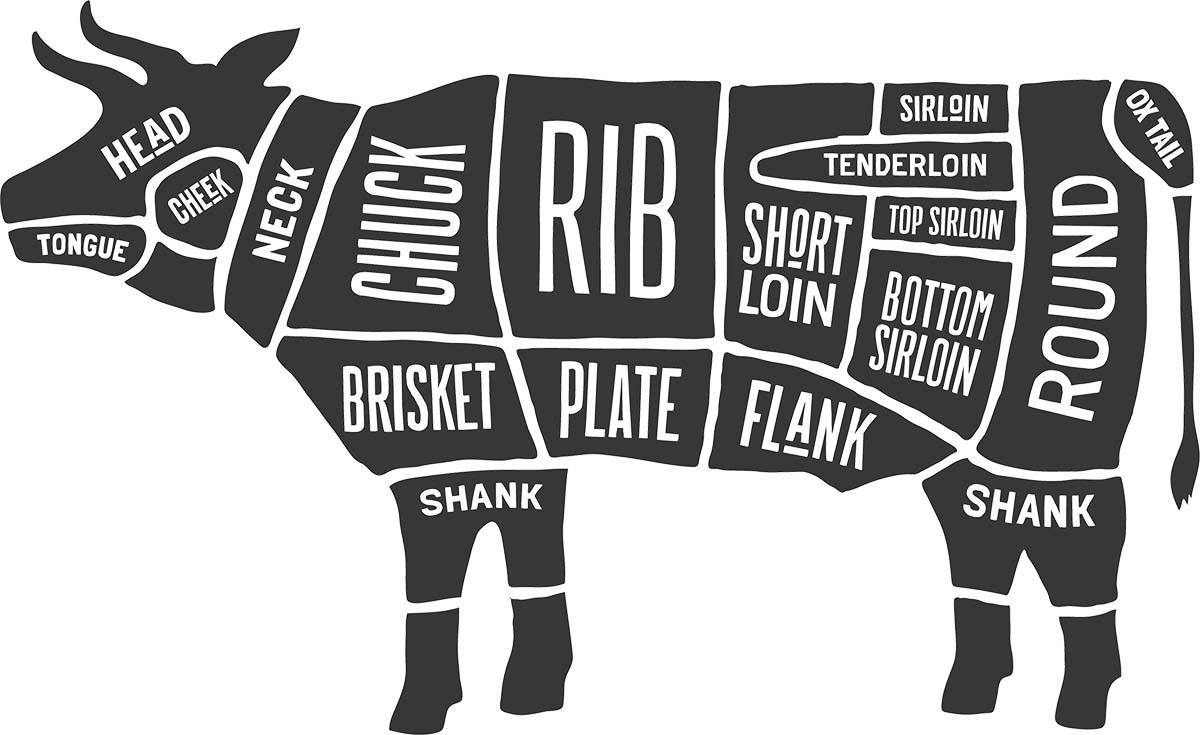Earth Day 2024 on our Family Farm
posted on
April 29, 2024
We feel like a day this important to celebrate deserves more than one day, so each morning this week we are going to share FIVE ways we give take care of our water, soil, air, animals, and plant life. Up first- let’s talk about all of our ponds!

On our farm, we filter our water through a series of ponds that sit at differing elevations, to let gravity do the work to keep the water moving. Water on our farm starts at roughly 720 above sea level (asl) and drops to nearly 510 feet asl to our wetlands area. Here the water runs through 2 ponds that span nearly 3 acres thus ensuring runoff is clearer (and naturally filtered!) than where it began. Recently, we began adding woodchips from a local furniture maker to pull nitrogen out of the water and to expedite the breakdown of the wood. Water passing through the woodchips exits with very little nitrogen. Later, we dredge up the broken-down chips, and add them to our fields as compost in July. Our wetlands are home to a variety of birds, waterfowl, insects, beneficial aquatic plant life like duckweed (nutritious!), as well as frogs and turtles. Our system of on-farm water filtration and conservation allows us to have a closed loop ecosystem so we do not need to utilize “city water” to hydrate our cattle and irrigate our fields.

Did you know that we source sustainable sawdust from a neighboring furniture company to use on our farm?
In areas around our feed bunkers and in our finishing barns we use sawdust for bedding. Not only is it a great way to support a local business in our community, but sawdust also provides a soft, temperature steady, healthy bedding that is best for our animals. Once we are through with it, we take that sawdust, which by this time is enriched with carbon holding manure, and we put it back out on our fields the cattle graze on. Thus, continuing the cycle of putting the carbon filled organic matter back where it belongs- in our soil.

You may not know this, but Ladybugs are on the job here on our farm.
In an effort to avoid using chemical pesticides, we release Ladybugs periodically to control Aphids. This is one of the more fun tasks on the farm as it really just feels like playing! We order small bags of the colorful beetles, and they arrive ready to scurry out and get down to the business of enjoying an Aphid buffet. This is one of the steps we take to solve an old problem with a new solution here on the farm.

Did you know that you can feed red or brown kelp to cattle to reduce their methane emissions by up to 82%?
It’s easy and can be done through their vitamin rations or even directly. It’s a powder and not at all unlike our own daily vitamins. You may be thinking that kelp might not be easy to find in Indiana, a landlocked state. And you would be right! There are only a few handful manufacturers who sell this nutritional additive, but as the research and enthusiasm grows, so will availability. How did we find out about this? We read detailed research gathered at UC Davis in California and followed the science. We have been doing this for several years now and as our on-farm research continues, we will be able to measure methane emissions from our own cattle using sensors in various areas of our farm. The more you know!

For our last Earth Day post we are sharing about a topic we speak about often: our rye grass!
Have you ever heard us talk about how much we love our rye grass? It’s not just the fact it’s beautiful, highly nutritious for our cattle, and grows well on our farm, those are all great reasons. What really warms our hearts are the deep roots of the annual rye grass that grow down into our soil. In fact, last summer our research partners at Geospherics measured roots as deep as 48” in many areas of our farm. What does that mean- really? Annual rye grass can grow over 4,000 pounds of roots per acre. Every year, these roots grow deep into the soil while their green, grassy tops are eaten or die off. Meanwhile, the roots remain in the soil. After each plant goes through a life cycle of pulling carbon out of the air, down through its plant system, and down through the deep root system, it is now in the soil where it will remain. This natural ‘Carbon Cycle’ takes place every day on the farm and all via our powerhouse cover crop- rye grass




